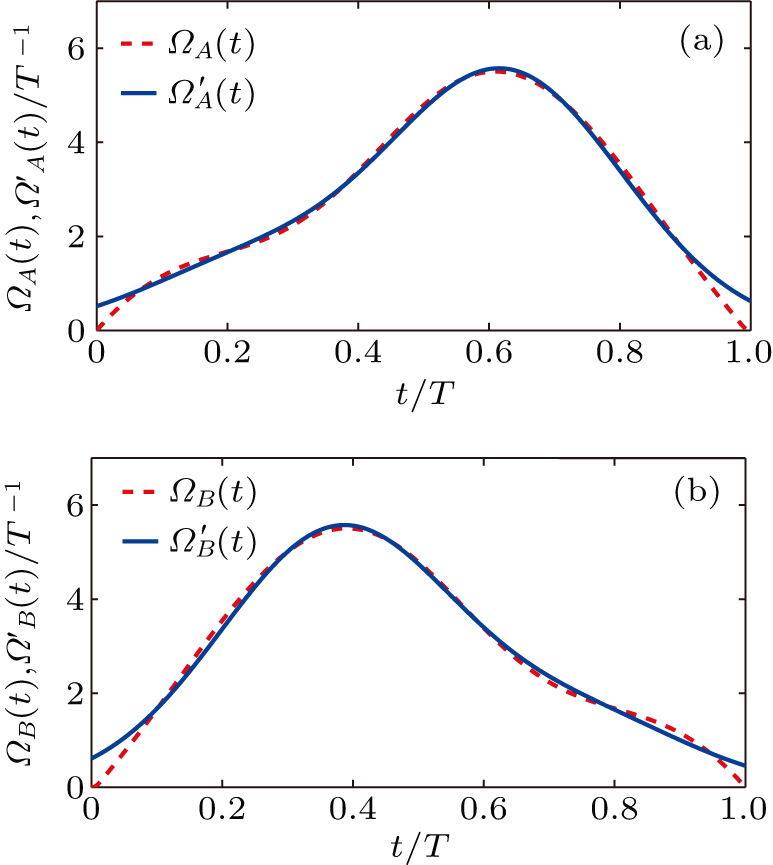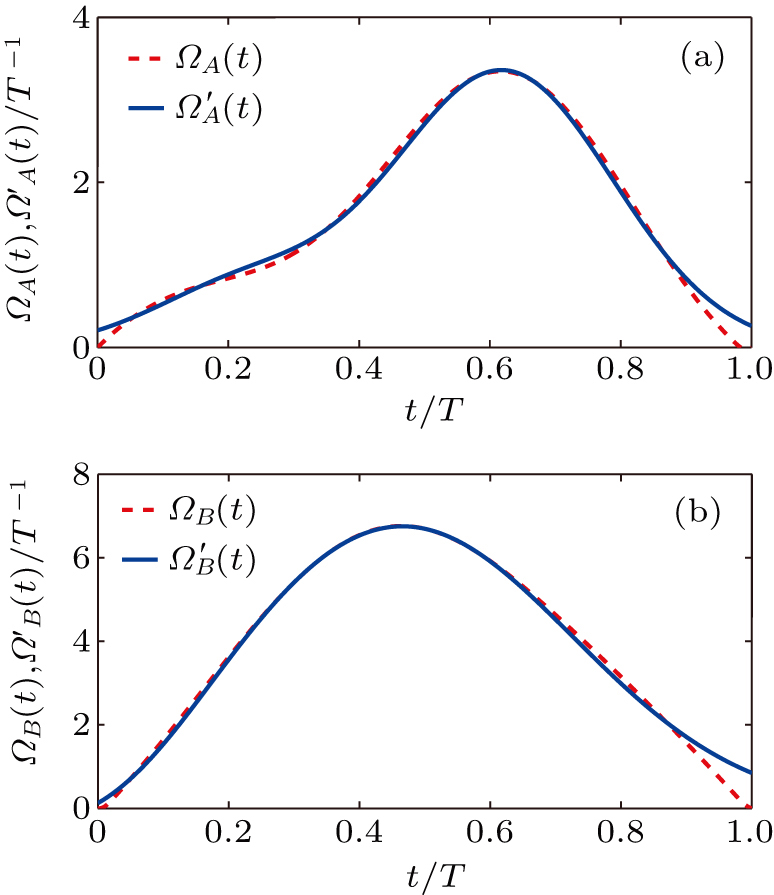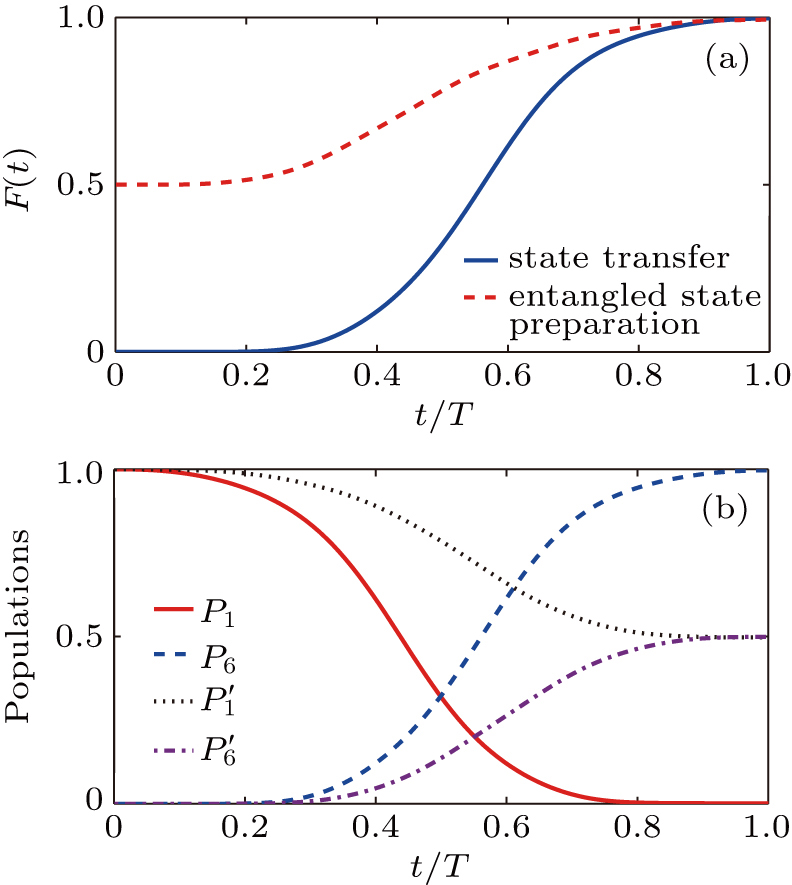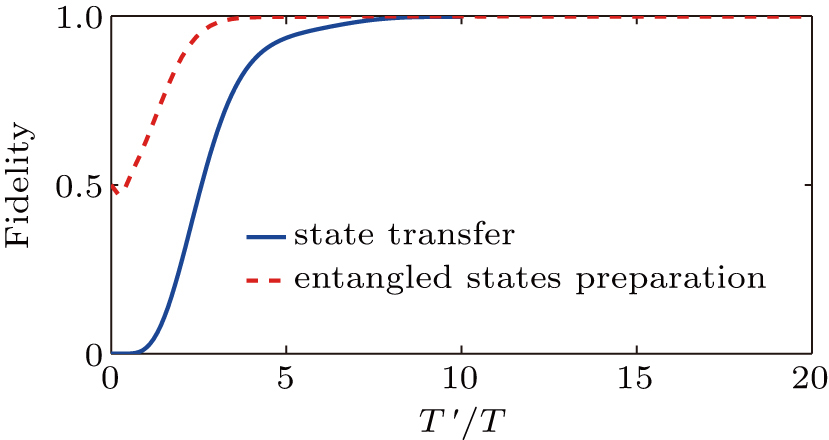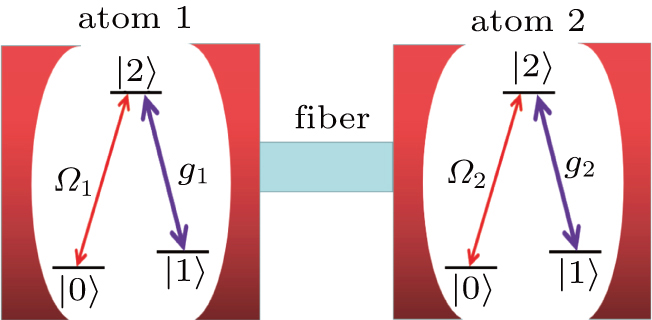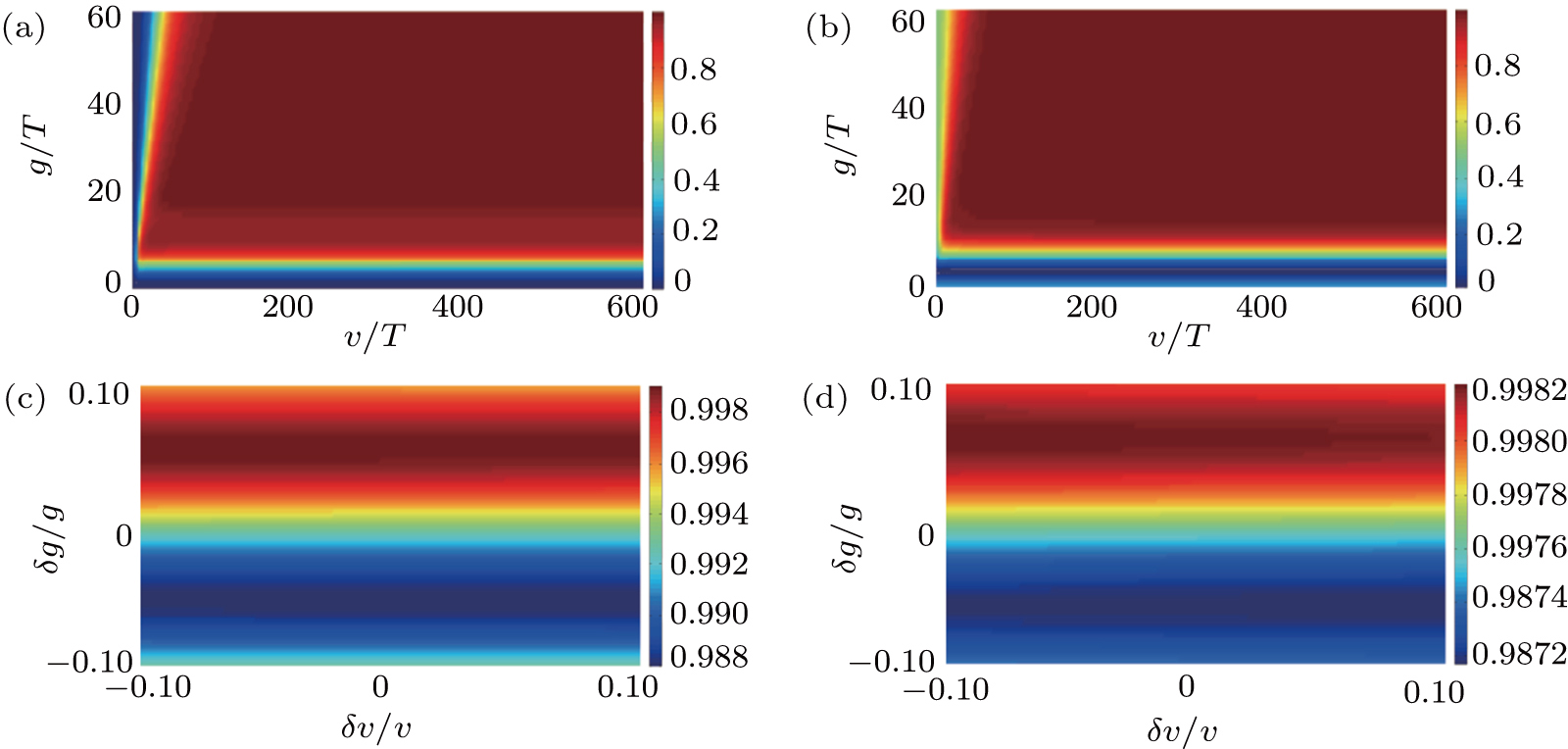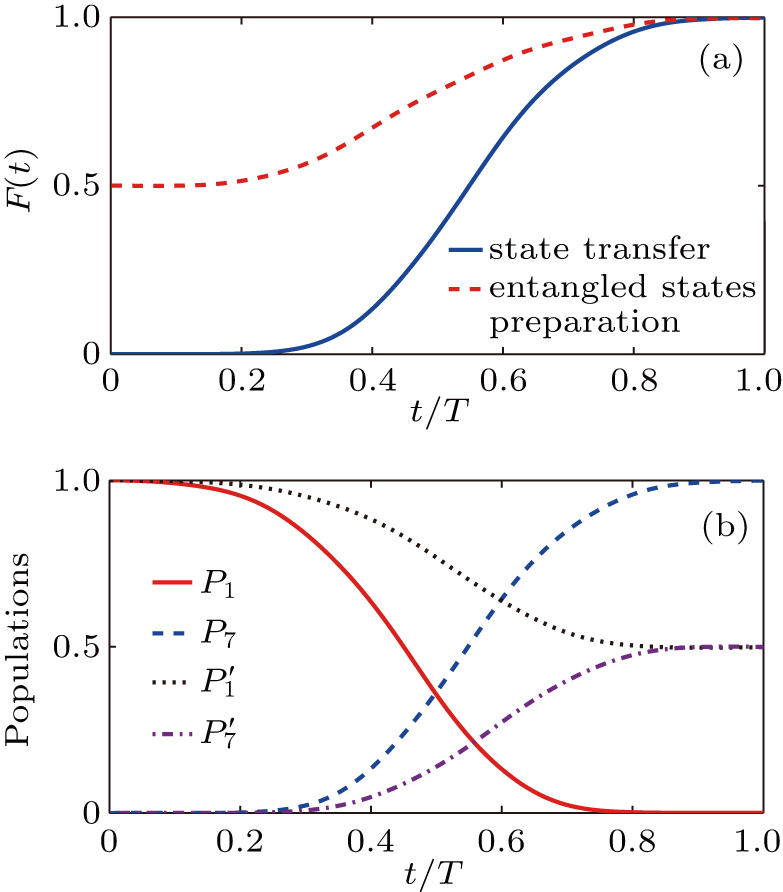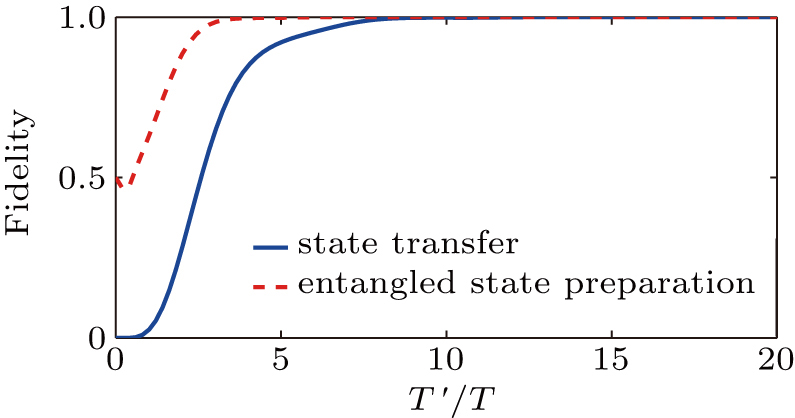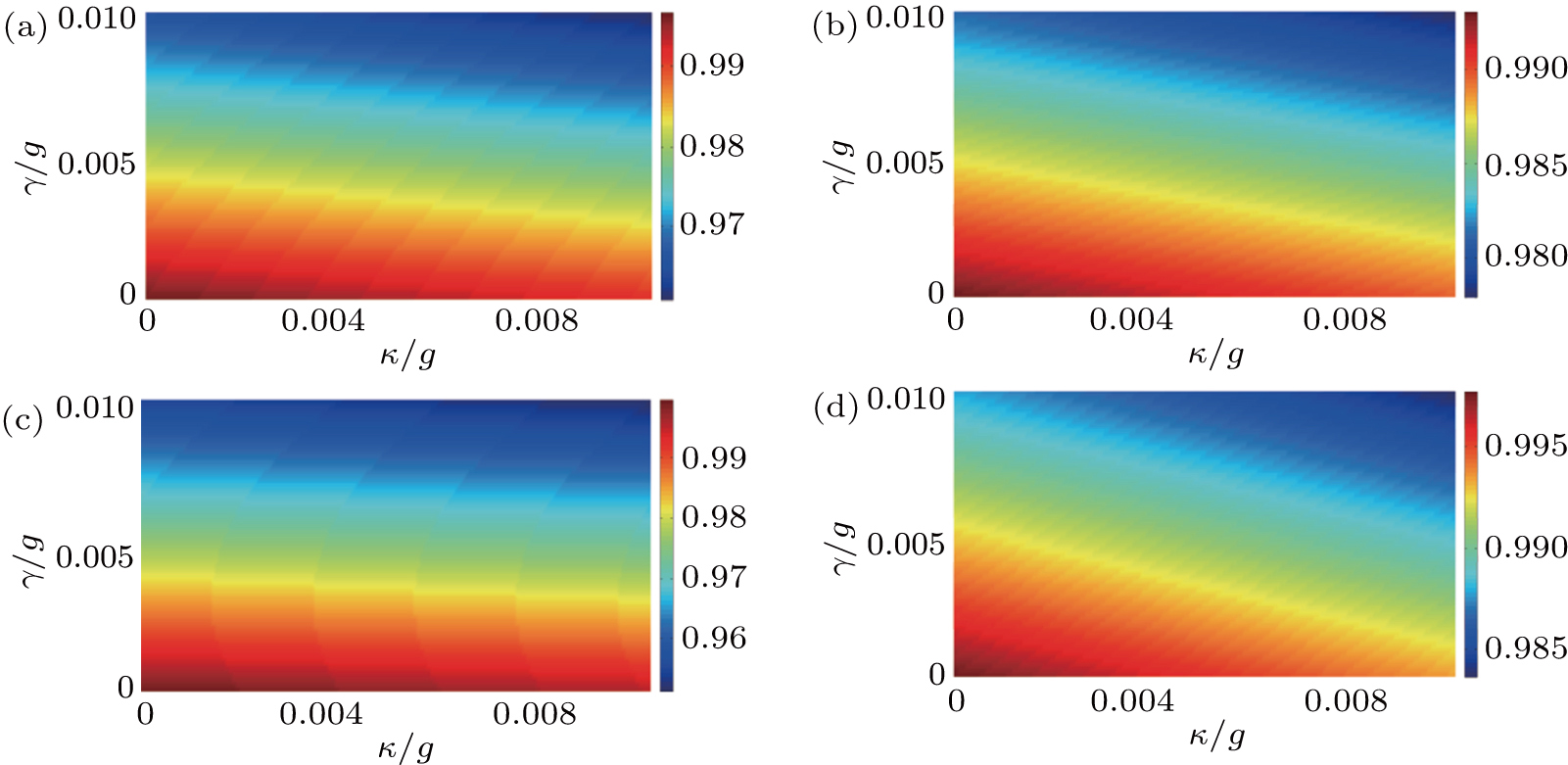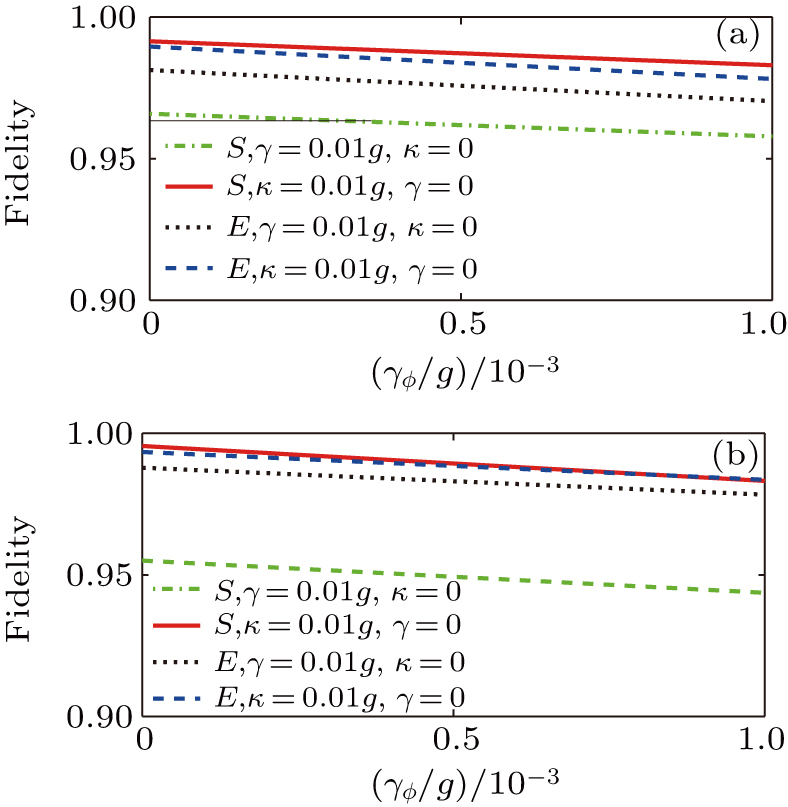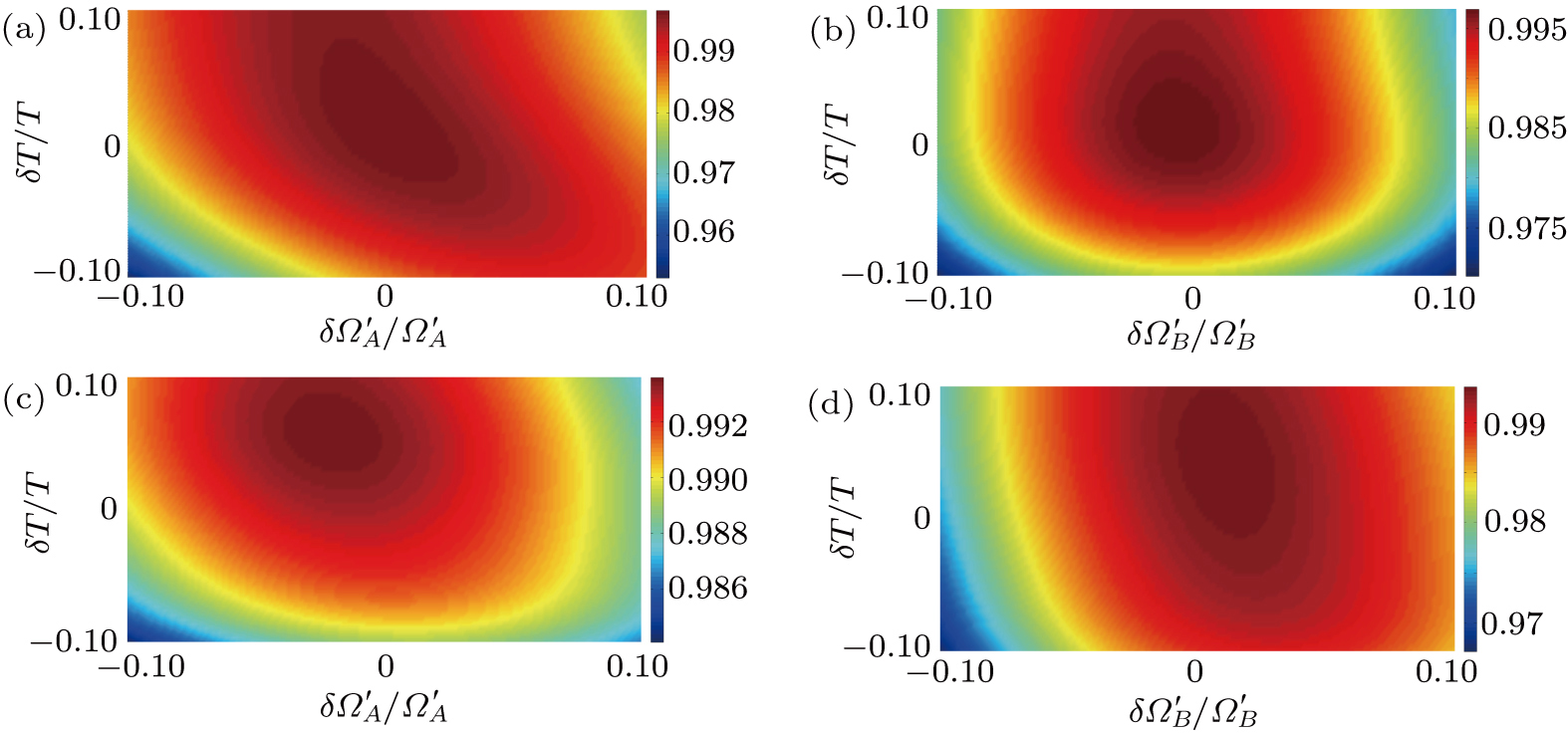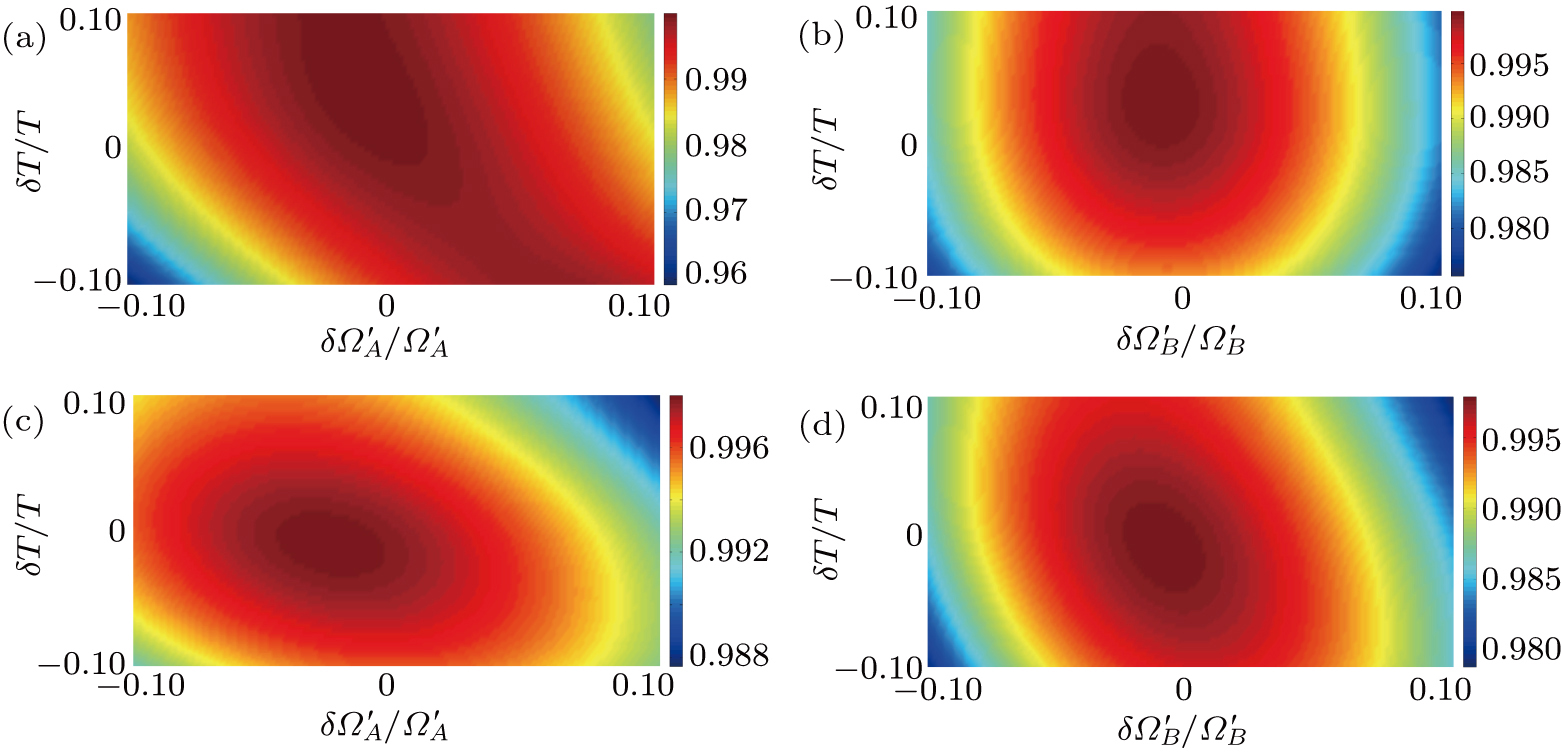† Corresponding author. E-mail:
Project supported by the National Natural Science Foundation of China (Grant No. 11804308).
We propose schemes to realize quantum state transfer and prepare quantum entanglement in coupled cavity and cavity–fiber–cavity systems, respectively, by using the dressed state method. We first give the expression of pulses shape by using dressed states and then find a group of Gaussian pulses that are easy to realize in experiment to replace the ideal pulses by curve fitting. We also study the influence of some parameters fluctuation, atomic spontaneous emission, and photon leakage on fidelity. The results show that our schemes have good robustness. Because the atoms are trapped in different cavities, it is easy to perform different operations on different atoms. The proposed schemes have the potential applications in dressed states for distributed quantum information processing tasks.
Quantum state transfer, to transfer the state of one atom to another one, is realized in many systems such as quantum spin networks system,[1] resonant cavity system,[2] disordered channels system,[3] spin chains system,[4] coupled-cavity arrays system.[5] In addition, a scheme is also proposed to improve the quantum state transfer by quantum partially collapsing measurements.[6] Quantum entanglement, an interesting and important phenomenon in quantum mechanics, is an important resource of quantum information processing,[7] such as quantum teleportation,[8,9] quantum secret sharing and secret splitting,[10] location-dependent communications,[11] quantum communication network,[12] and so on. Lately, the preparation of quantum entanglement is becoming more and more important and has been widely studied in cavity QED systems,[13–19] spin ensembles system,[20] multidimensional engineering system,[21] solid-state spin system,[22] nitrogen-vacancy centers system,[23] a quantum router,[24] (in a quantum router, an error-detected method has been proposed[25]) and so on. In addition, entangled states can also be prepared by controlled phase gate.[26] Some controlled phase gate schemes have been well designed in trapped neutral atoms.[27–32] In recent years, quantum entanglement and state transfer can be implemented experimentally in remote microwave cavity memories system.[33]
In the experiments of quantum computation and quantum information processing, some parameters fluctuations during the whole experimental process are inevitable and would decrease the performance of the scheme. The adiabatic evolution is a highly robust method[34] to deal with some parameter fluctuations. However, the adiabatic evolution takes a long time, so the target may be affected by noise and other factors that induce decoherence. In order to overcome the disadvantage, many accelerated schemes have been proposed.[35–65] The transitionless quantum driving (TQD) is one of the promising methods to accelerate the adiabatic evolution.[35–44] However, when we use this method to accelerate the evolution, we will encounter the difficulty that the initial state and the desired state or two energy levels in the original Hamiltonian are difficult to couple directly in experiment. Although the requirement for additional unaccessible ground-state couplings may be relaxed sometimes, the conditions on which the three-level system can be simplified to effective two-level system should be satisfied to further modify the pulses.[17,45] Another way to accelerate adiabatic evolution is Lewis–Riesenfeld invariants with pulse either needs infinite energy gap to be perfect, or cannot be opened or closed smoothly.[44,46–55,66]
Recently, Baksic et al. proposed a dressed state method to accelerate the adiabatic passage.[52] In dressed state scheme, the modified Hamiltonian of the coupling of two states, which is easily realized in experiment is introduced. Through two unitary transformations, the parameters of the modified Hamiltonian can be determined and the form of driving pulse can be obtained, which makes the scheme easy to implement in experiment. Based on the dressed states scheme, Kang et al. applied deressed state method to superconducting quantum interference devices to realize the fast preparation of W states;[53] Ban et al. indicated a design to fast create and transfer coherence in triple quantum dots by using the dressed state method;[54] Wu et al. proposed the schemes to accelerate state transfer and entanglement preparation and realize a fast CNOT gate all by using the dressed state method,[55,56] and so on.
Based on the above schemes, we propose effective schemes to realize the distributed quantum entanglement and state transfer by trapping two atoms in two different cavities in cavity–fiber–cavity system and coupled cavity system, and accelerate the implementation of the schemes by using the dressed state method. In this paper, the use of QED system can avoid the interaction of the applied fields. Beyond that, we give the expression of parameters used in the scheme of the dressed state by boundary conditions, and the expression of modified pulses obtained by the scheme of dressed state. Then, the pulse which is similar to the modified pulse and easy to realize in experiment is obtained by curve fitting. The results of numerical simulation show that our schemes have high fidelity and have good robustness to dissipation caused by photon leakage, spontaneous emission, and fluctuation of some parameters whether in coupled cavity system or in the cavity–fiber–cavity system. In a word, we propose fast schemes for the preparation of distributed quantum entanglement and state transfer.
The structure of this paper is arranged as follows: In Section
As we will use it below, let us briefly introduce quantum Zeno dynamics. We express the Hamiltonian that controls the evolution of quantum system as follows:


As shown in Fig.
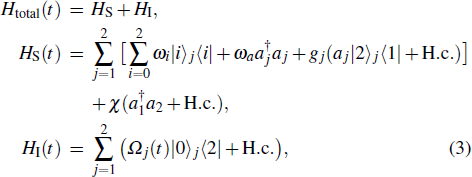






We put the system in state |0⟩1|1⟩2|1⟩c at t = 0. Therefore, the total system will evolve in the following Hilbert space:
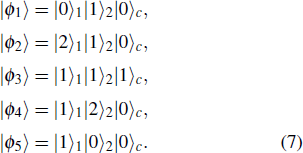

























In order to realize state transfer and smooth opening and closing of parameters, the conditions: θ(ti) = 0, θ(tf) = π/2, μ(ti) = 0, μ(tf) = 0, and 



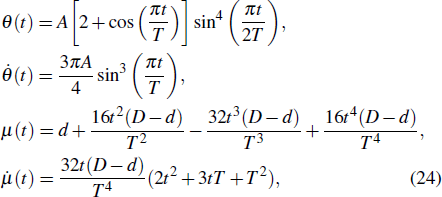














In this section, we make numerical simulations with the Hamiltonian of Eq. (

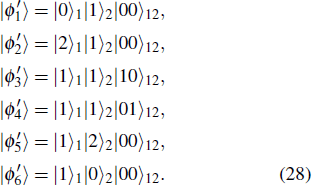







In order to prove the feasibility of our scheme, we plot the fidelity and population via the numerical simulations in Fig. 
















As shown in Fig.
The Hamiltonian of the system can be written as (ħ = 1)





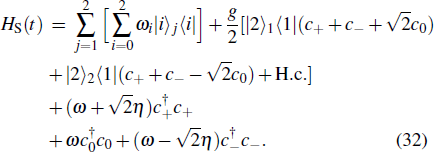






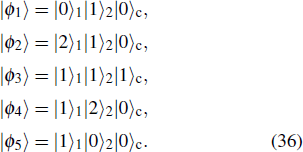














We can see from the expression of Eq. (









The entire system will evolve along the state |ψd(t)⟩. As a result, when θ(ti) = 0, θ(tf) = π/2, μ(ti) = 0, and μ(tf) = 0, the state transfer |ϕ1⟩ → − |ϕ5⟩ = |0⟩1|1⟩2|0⟩c→ − |1⟩1|0⟩2|0⟩c is carried out; when θ(ti) = 0, θ(tf) = π/4, μ(ti) = 0, and μ(tf) = 0, the preparation of entangled state 
In this section, we make numerical simulations to determine some parameters. We choose the Hamiltonian of Eq. (

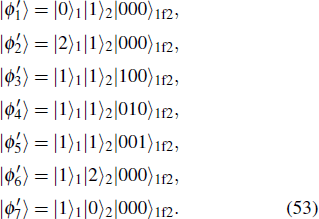









As shown in Fig. 










In this section, we consider the influence of photon leakage from cavity or fiber and atomic spontaneous emission on fidelity. These dissipations are experimentally unavoidable. When these dissipations are considered, the evolution of the whole system can be described by the following master equation:
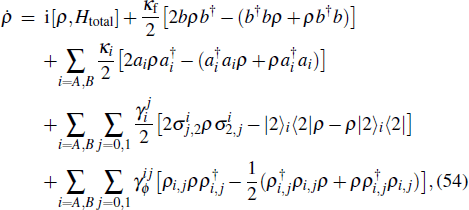





As shown in Fig.
In addition, the fluctuations of some parameters are also inevitable in practical experiments. Therefore, we also study the influence of some parameter fluctuations on fidelity. We assume that the actual operating time is 















We proposed schemes of state transfer and entanglement preparation in coupled cavity system and cavity–fiber–cavity system respectively. The results of numerical simulations show that our schemes have high fidelity, greatly reduce the evolution time of the systems, and have high robustness for some dissipation and parameter fluctuations. We hope that our scheme can contribute to the processing of quantum information when it is widely used.
| [1] | |
| [2] | |
| [3] | |
| [4] | |
| [5] | |
| [6] | |
| [7] | |
| [8] | |
| [9] | |
| [10] | |
| [11] | |
| [12] | |
| [13] | |
| [14] | |
| [15] | |
| [16] | |
| [17] | |
| [18] | |
| [19] | |
| [20] | |
| [21] | |
| [22] | |
| [23] | |
| [24] | |
| [25] | |
| [26] | |
| [27] | |
| [28] | |
| [29] | |
| [30] | |
| [31] | |
| [32] | |
| [33] | |
| [34] | |
| [35] | |
| [36] | |
| [37] | |
| [38] | |
| [39] | |
| [40] | |
| [41] | |
| [42] | |
| [43] | |
| [44] | |
| [45] | |
| [46] | |
| [47] | |
| [48] | |
| [49] | |
| [50] | |
| [51] | |
| [52] | |
| [53] | |
| [54] | |
| [55] | |
| [56] | |
| [57] | |
| [58] | |
| [59] | |
| [60] | |
| [61] | |
| [62] | |
| [63] | |
| [64] | |
| [65] | |
| [66] | |
| [67] | |
| [68] | |
| [69] | |
| [70] | |
| [71] | |
| [72] |



